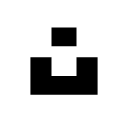How I Built An iPhone Fitness App To $1,000 MRR
Hello! Who are you and what business did you start?
My name is Joel Runyon and I started an app called MoveWell. The app is designed to help you move better, get stronger and prevent injuries. It’s your ultimate movement and mobility companion.
Our customers are athletes and desk jockeys looking to perform better in fitness and generally move better and have less pain. The app has been out for a few years and currently brings in about $1,200-$1,800 per month, a nice amount of extra cash, but not really a huge business yet.
Even though MoveWell brings in the smallest amount of revenue of any of my ventures, the project has some of my most enthusiastic followers. I used to have a business partner, but recently bought him out and am looking to scale the business even more by adding coaches, consistently adding content, and doing branded partnerships over the next 6-12 months.


Download the report and join our email newsletter packed with business ideas and money-making opportunities, backed by real-life case studies.

Download the report and join our email newsletter packed with business ideas and money-making opportunities, backed by real-life case studies.

Download the report and join our email newsletter packed with business ideas and money-making opportunities, backed by real-life case studies.

Download the report and join our email newsletter packed with business ideas and money-making opportunities, backed by real-life case studies.

Download the report and join our email newsletter packed with business ideas and money-making opportunities, backed by real-life case studies.

Download the report and join our email newsletter packed with business ideas and money-making opportunities, backed by real-life case studies.

Download the report and join our email newsletter packed with business ideas and money-making opportunities, backed by real-life case studies.

Download the report and join our email newsletter packed with business ideas and money-making opportunities, backed by real-life case studies.



















